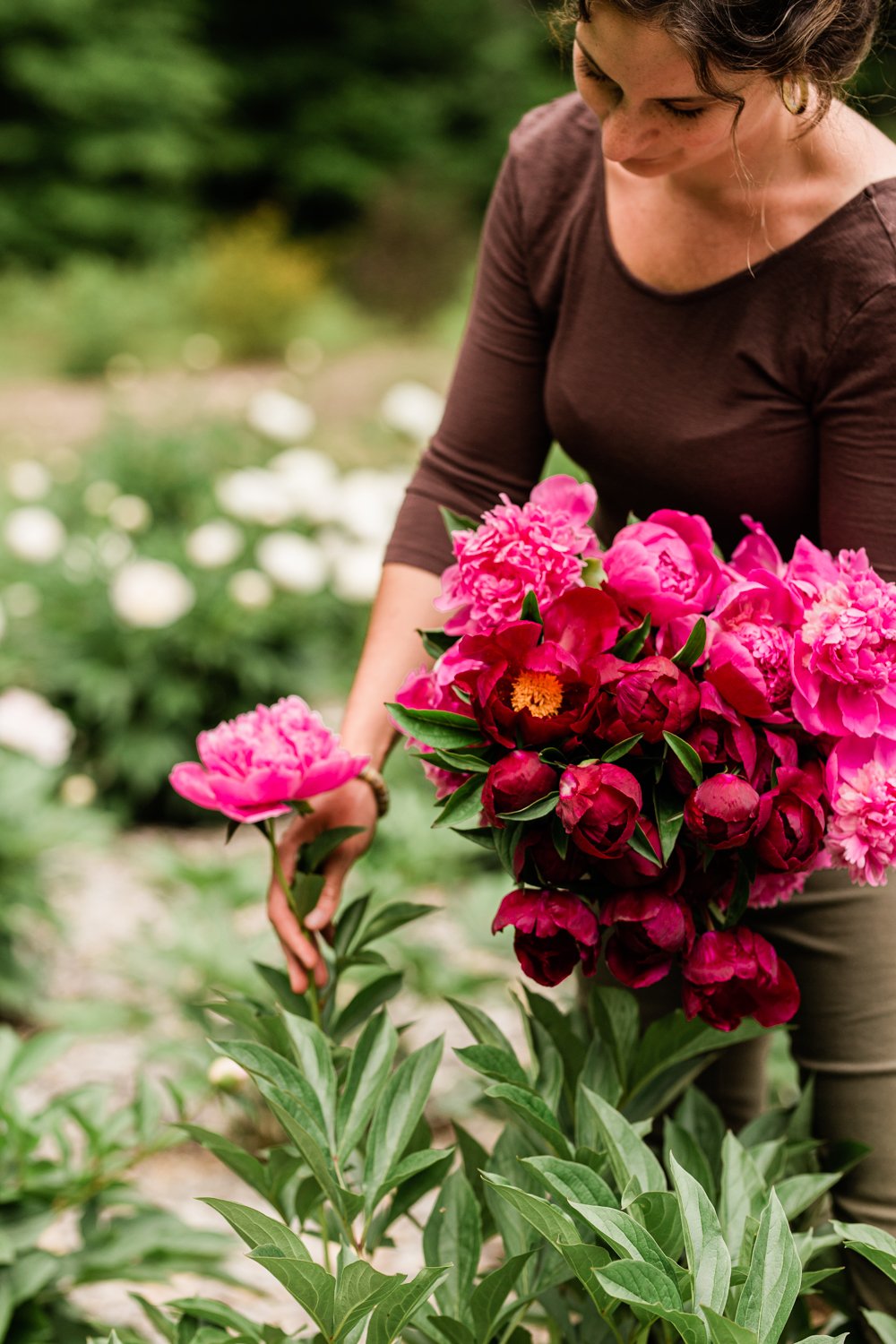If you’re looking to grow a profitable flower farm or expand your existing offerings with a crop that’s low maintenance, highly in-demand, and long-lasting, peonies are a smart place to start.
These stunning blooms aren’t just a favorite among florists and customers—they’re also one of the most profitable cut flowers you can grow. Whether you’re a beginner with a few garden beds or a budding flower farmer exploring wholesale or retail sales, this guide will walk you through exactly how to grow peonies for profit.
Why Peonies Are One of the Most Profitable Cut Flowers
Peonies check all the boxes for beginner flower farmers:
Low maintenance: Once established, they require minimal care.
Incredibly long-lived: Peony plants can thrive and produce for 50+ years.
High demand: Loved by florists, event designers, and brides & couples alike.
Post-harvest flexibility: Can be dry stored for weeks and rehydrated as needed.
Works across sales channels: Peonies can be sold wholesale to florists, at farmers markets, through CSAs and subscriptions, or featured in weddings and on-farm experiences.
Real-Life Example: Peonies at Tanglebloom
On our flower farm, Tanglebloom, we’ve planted hundreds of peonies over the years. Here’s what it looks like in practice:
Plants are spaced 3’ apart in rows 4’ apart to allow airflow (which helps prevent disease) and accommodate agritourism activities like u-pick.
We fertilize only every few years and do not irrigate.
The care, harvest, and sales window lasts 6–8 weeks per year. The rest of the year? Field labor is minimal.
We add new plants every few years to grow our collection, respond to market demand, and conduct research (but many other growers plant just once)
Peonies can be a powerful legacy crop that produces income year after year with low ongoing effort.
How to Source Peony Roots
When sourcing peony roots, you’ll typically buy from wholesale suppliers who require minimum orders of 10–25+ per variety. While this may feel like a big investment up front, the price break makes it worthwhile.
Tips:
Split orders with another grower
Buy surplus from another grower if you're just testing things out
Try before you plant: If you're a farmer-florist or florist, source fresh stems from another grower to trial different varieties before investing in roots.
How to Plant Peonies
Best Zones for Peonies: USDA Hardiness Zones 3–7 (and sometimes 8/9 with special care).
Site Selection:
Full sun (6–8+ hours/day)
Well-drained soil
Planting Depth:
Zones 3–5: 2” below soil
Zones 6–7: 1–1.5” below soil
Zones 8–9: 0.5–1” below soil
Growing in Warmer Zones (8/9)?
Look for cooler microclimates on your land
Provide afternoon shade
Choose early, single/semi-double blooming varieties
Be prepared to irrigate
Peonies need about 40 days under 40°F each winter to bloom well, so success in warm zones requires planning.
Should You Disbud Young Peony Plants?
Yes—especially in the first year. Disbudding redirects the plant’s energy into root development. Here’s what we recommend:
Year 1: Remove all buds
Year 2: Harvest a few short stems from vigorous plants
Year 3: Begin a modest harvest from healthy plants
This sets your peonies up for long-term productivity and profitability.
Fall Peony Care
After your first frost:
Cut all foliage to the ground
Dispose of it (don’t compost!) to prevent disease
This seasonal cleanup keeps your plants healthy for the long haul.
How to Harvest Peonies for Maximum Vase Life
Most peonies should be harvested at the marshmallow stage—when the bud shows color and has a soft, squishy feel when gently pinched. This stage:
Stores better in a cooler
Gives your customers longer vase life
Takes up less room during storage and transport
Dry Storage: A Game-Changer for Flower Farmers
Yes, it’s true—you can dry store peonies for weeks!
Here’s how:
Harvest at marshmallow stage
Remove foliage
Wrap 10–20 stems in kraft paper or newspaper
Seal with tape or rubber bands
Store in crates or boxes in a cooler at 35–38°F
Some varieties store better than others, but this method gives you major flexibility in your sales window.
Rehydrating Dry Stored Peonies
To rehydrate:
Unwrap
Give stems a fresh 1–2” cut
Place in cool water
Keep in a warm area to speed opening (most open within 24 hours)
Dry storage is one of the key reasons peonies are such a profitable cut flower for growers.
Are Peonies Profitable?
With wholesale prices ranging from $3–$6 per stem (often more for premium varieties and in high-demand windows), peonies offer a strong return on investment.
With proper care and strategic planting, a single peony plant can yield dozens of stems annually—for decades.
If you’re ready to build a profitable flower farm with a crop that works hard for you year after year, peonies are it.





